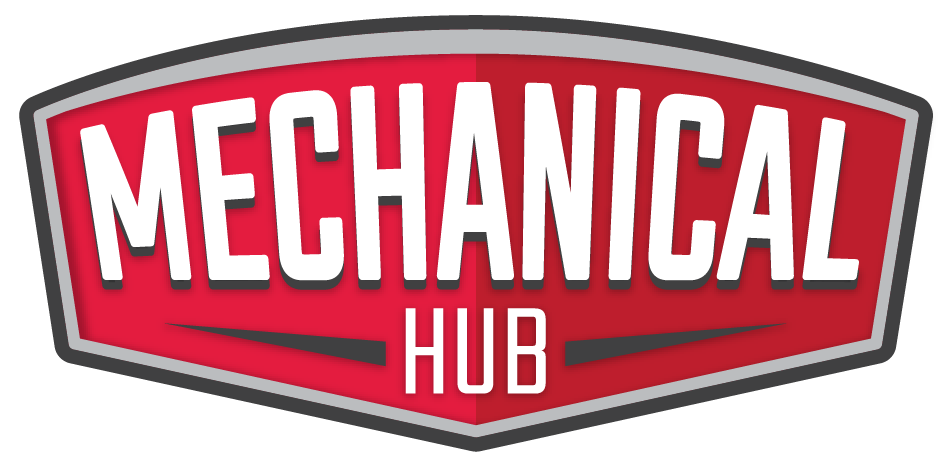Through preventative AC maintenance, you may be able to prevent thousands of dollars in repair costs. For instance, a new compressor or evaporator coils can easily cost more than $1,000 to repair. By taking care of your AC, you can prevent emergency repairs from happening. When your AC breaks down, it’s never at a convenient Read more
Whats New

Through preventative AC maintenance, you may be able to prevent thousands of dollars in repair costs. For instance, a new compressor or evaporator coils can easily cost more than $1,000 to repair. By taking care of your AC, you can prevent emergency repairs from happening.
When your AC breaks down, it’s never at a convenient time. Air conditioners break when they’re being used the most, which means your emergency repairs will most likely occur during peak usage times. Worse still, everyone else will also need emergency repairs at the same time.
If your AC does need repairs, it’s important to turn to a reliable company to help. With the assistance of an experienced heating, ventilation, and air conditioning (HVAC) technician, you can get the problem diagnosed and repaired right away.
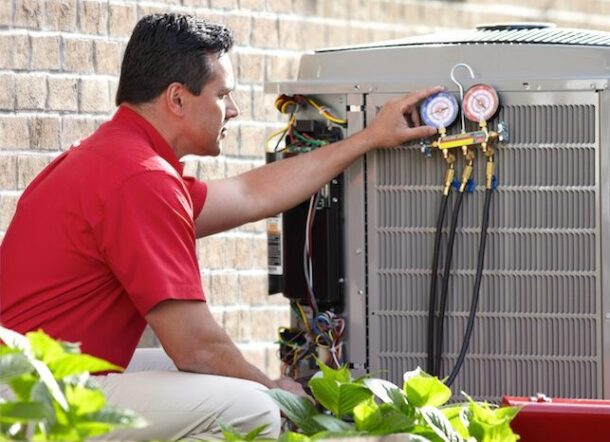
Why Preventative Maintenance is Essential for Your AC System
By getting preventative maintenance, you can enjoy a number of important benefits.
- Prevent Costly Repairs: The best AC maintenance tips can help you prevent costly repairs from happening because a well-maintained AC is less likely to break down.
- Improve Energy Efficiency: Many maintenance issues, like dirty filters, force your AC to work harder. By changing your filter and maintaining your AC, you can spend less money on your energy bills.
- Boost AC Lifespan: If your AC is maintained and needs fewer repairs, it will likely last longer. A typical air conditioner can last 15 to 20 years if it is properly cared for.
- Avoid System Failures: The last thing you want during a heat wave is a surprise system failure. By taking care of your AC, you’re reducing emergency AC repairs and system failures.
- Increase Performance: Additionally, better maintenance helps your system achieve its maximum performance during critical times.
Key Maintenance Tips to Prevent Emergency AC Repairs
To minimize the likelihood of emergency AC repairs, use the following AC maintenance tips. For more complicated maintenance tasks, reach out to an HVAC professional for expert assistance.
- Regularly Replace Air Filters: The AC filter is supposed to be cleaned or replaced every 30 to 90 days. If this doesn’t happen, it can cause extra strain on your system and reduce the AC’s efficiency.
- Inspect and Clean Condenser Coils: Condenser coils must be free from dirt and debris. You can wash off the dirt with a hose or get an HVAC technician to help you.
- Check Refrigerant Levels: If the refrigerant is low, it can cause overheating and system failure. Low refrigerant is often due to leaks, which must be repaired by an HVAC professional. In addition, anyone who recharges refrigerant must have a special certification.
- Ensure Proper Thermostat Function: When your thermostat isn’t working, it can cause the rest of your AC to work harder than necessary. If the sensor is broken, the AC may also have issues kicking on when it needs to.
- Inspect Ductwork for Leaks: If there are gaps in your ductwork, cold air can escape. This means your system will have to work harder and use more energy to cool your home. Additionally, it can cause uneven cooling. Fortunately, a professional technician can quickly find and repair leaks if this is the problem.
Seasonal Maintenance Checklist for Optimal Performance
Air conditioning upkeep isn’t just for the summertime. There are preventative AC maintenance tasks you can do during each season to keep your HVAC system working its best.
- Spring: During the springtime, it’s important to schedule a professional inspection and tune-up. You want your system to be ready before summer arrives. Other than scheduling an inspection, you should also clean the coils and replace the filters.
- Summer: When summer arrives, it is important to pay attention to unusual noises or cooling issues. These may indicate a repair requirement or a strain on your system.
- Fall: Once fall sets in, it is time to clean around your outdoor unit. Then, cover it up to prevent debris from getting inside during the off-season.
- Winter: When your AC isn’t in use, it’s important to turn it off properly. You should make sure it is protected from winter weather.

The Role of Professional HVAC Services in Preventative Maintenance
A professional HVAC company, like Rogue Valley Heating & Air, can help you diagnose and repair problems. By scheduling a professional inspection, you can catch potential issues before they spiral out of control. Partnering with a professional for your comprehensive maintenance can help you save money in the long run and keep your system functioning smoothly.
When to Seek Help from an Emergency AC Repair Service
With proper HVAC maintenance, you can prevent unexpected breakdowns. However, even the best preventative care can’t stop every emergency issue from happening. Through the best emergency AC repair service, you can get help for important problems, like frequent cycling, a lack of cool air, and strange noises.
Preventative Maintenance Can Prevent Costly Repairs
Getting preventative AC maintenance on a regular basis can help by reducing emergency AC repairs, boosting your energy efficiency, and avoiding unexpected breakdowns. Other than using the best HVAC maintenance tips, you can also protect your system by scheduling regular inspections with a company like Rogue Valley Heating & Air.
When an issue occurs, it needs to be dealt with before it becomes a larger problem. With the help of a trusted emergency AC repair service, you can quickly address the problem and find a solution.
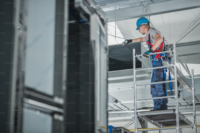
Poor indoor air quality can adversely affect your business. Not only will employees experience discomfort and/or become ill, but the same kinds of things will also affect your customers. Neither of these will be good for your business. Additionally, having dirty and/or clogged ducts could cost you more money on your heating bills and cause Read more
Poor indoor air quality can adversely affect your business. Not only will employees experience discomfort and/or become ill, but the same kinds of things will also affect your customers. Neither of these will be good for your business. Additionally, having dirty and/or clogged ducts could cost you more money on your heating bills and cause you to run afoul of building inspectors. It’s easy enough to have your ducts cleaned by a professional HVAC company.

Indoor Air Quality
This information applies to residential air ducts, but the same principles also apply to businesses. Really, the only difference is the scale of the system. Commercial HVAC still has compressors, coils, and ducts even if they’re larger than their residential counterparts.
The chief problem that occurs with dirty ducts is that biological contaminants can grow inside the ducts, particularly if there is standing water in them for whatever reason. These contaminants thrive in moist conditions, producing spores and attracting allergens. Another kind of biological contaminant is when a critter gets trapped inside the air ducts and dies. In addition to already-mentioned contaminants, the remains can also deposit bacteria and viruses into the HVAC system. These could be diseases the animal carried in life but also diseases that form after the animal’s death.
In addition to the biological contaminants, especially in commercial systems, there could be volatile organic compounds that waft into the system. These include things like methalyne chloride, formaldehyde, benzene, toluene, and stryene among others. When ducts are dirty and/or clogged, these vapors can attach themselves to the airborne particulates and also the dirt attached to the duct walls. Additionally, if the ducts aren’t clean, then they won’t be able to circulate the air correctly. The dirty ducts can also lead to overtaxed filters, which could wind up not removing either the biological contaminants or the volatile organic compounds.
The Effect on Your Energy Bill
Overtaxed HVAC systems use more energy than normal. You should keep an eye on your energy bills, and look out for statistically significant jumps in power usage and/or cost. Minor changes, such as those brought on by a heat wave in summer or cold snap in winter, aren’t what to look out for. A sudden jump of 25% or more indicates a serious problem. Also, if more employees than normal are calling in sick, or you receive phone calls from customers who have taken ill, then that’s also an indication, particularly if you also notice a spike in your energy bills.
No DIY
Even more than in the case of residential HVAC, it’s imperative that you not try to handle your company’s dirty-duct problem yourself. Not only could it be unsafe for you to do so, it could also wind up being much more expensive than calling a professional if you break something or perform any DIY repairs incorrectly. Worse, incorrect repairs might not be up-to-code, which could result in fines and/or lawsuits, depending on the severity of the problems you might cause by trying to DIY.
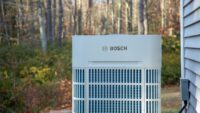
Advertising is a critical component of success for any business, and the heat pump industry is no exception. With the increasing demand for energy-efficient heating and cooling solutions, it’s essential for heat pump businesses to stand out in a competitive market. Effective advertising strategies not only attract new customers but also build brand recognition and Read more
Advertising is a critical component of success for any business, and the heat pump industry is no exception. With the increasing demand for energy-efficient heating and cooling solutions, it’s essential for heat pump businesses to stand out in a competitive market. Effective advertising strategies not only attract new customers but also build brand recognition and loyalty. This article explores the best ways to advertise your heat pump business, from traditional methods to digital marketing techniques, and highlights the importance of leveraging eye-catching neon signs to capture the attention of passersby.
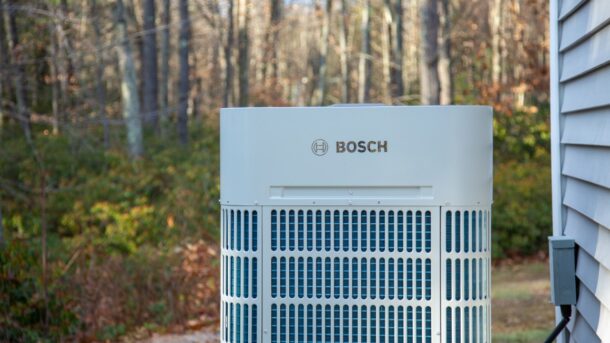
Establishing a Strong Online Presence
In today’s digital age, having a strong online presence is crucial for any business. For a heat pump business, this means more than just having a website—it involves actively engaging with potential customers through various online platforms. Your website should be optimized for search engines (SEO) to ensure that when potential customers search for heat pump services in your area, your business appears at the top of the results.
Key Online Advertising Strategies
- Search Engine Optimization (SEO): SEO is essential for driving organic traffic to your website. By optimizing your website with relevant keywords, meta descriptions, and high-quality content, you can improve your search engine ranking and attract more visitors. For instance, using keywords like “heat pump installation” or “energy-efficient heating” can help your business appear in searches related to those terms.
- Pay-Per-Click (PPC) Advertising: PPC ads allow you to target specific keywords and demographics, ensuring that your ads reach the right audience. With PPC, you only pay when someone clicks on your ad, making it a cost-effective way to generate leads. Consider running PPC campaigns on Google Ads or social media platforms like Facebook to reach potential customers actively searching for heating solutions.
- Social Media Marketing: Social media platforms like Facebook, Instagram, and LinkedIn are powerful tools for reaching a broad audience. Regularly posting content about your services, promotions, and customer testimonials can help build your brand and engage with your community. Social media ads can also be highly targeted, allowing you to reach specific audiences based on location, interests, and behavior.
- Content Marketing: Creating valuable content such as blog posts, videos, and infographics about heat pumps and energy efficiency can position your business as an industry expert. This not only drives traffic to your website but also builds trust with potential customers, making them more likely to choose your services.
Statista reports that in 2021, global digital ad spending reached over $455 billion, highlighting the importance of online advertising in today’s business landscape.
Leveraging Traditional Advertising Methods
While digital marketing is essential, traditional advertising methods should not be overlooked. These methods can complement your online efforts and help you reach a broader audience, particularly in your local community.
Effective Traditional Advertising Techniques
- Local Newspaper and Magazine Ads: Advertising in local newspapers and magazines is a great way to reach potential customers in your area. These publications often have a loyal readership and can be an effective way to build brand awareness. Consider placing ads in publications that focus on home improvement or energy efficiency.
- Direct Mail Campaigns: Sending out postcards, brochures, or flyers directly to homes in your service area can be a highly targeted way to advertise your business. Include special offers or discounts to encourage potential customers to take action.
- Radio and TV Ads: Depending on your budget, radio and TV ads can be an effective way to reach a wide audience. These ads can be particularly impactful if you’re promoting seasonal services, such as winter heating solutions.
- Billboards and Signage: Billboards and signage in high-traffic areas can provide constant exposure to your brand. Make sure your message is clear, concise, and includes a call to action.
Comparison of Online and Traditional Advertising Methods
| Advertising Method | Reach | Cost Effectiveness | Targeting Capabilities |
| Search Engine Optimization | High (Global/Local) | High (Long-term benefits) | High (Keyword targeting) |
| Pay-Per-Click Advertising | High (Global/Local) | Medium (Pay-per-click) | High (Demographic and keyword targeting) |
| Social Media Marketing | High (Global/Local) | High (Organic reach + ads) | High (Demographic and behavioral targeting) |
| Local Newspaper Ads | Medium (Local) | Medium (Print ad costs) | Medium (Local readership targeting) |
| Direct Mail Campaigns | Medium (Local) | Medium (Printing and postage) | High (Geographic targeting) |
| Radio and TV Ads | High (Local/Regional) | Low to High (Varies by market) | Medium (Broadcast area targeting) |
| Billboards and Signage | High (Local) | Medium to High (Location-dependent) | Low (General visibility) |
Forbes notes that a combination of digital and traditional advertising methods can create a more comprehensive marketing strategy, reaching a diverse audience across multiple channels.
Using Neon Signs to Attract Attention
One of the most effective ways to attract local customers is by using neon signs to advertise your heat pump business. Neon signs are bright, eye-catching, and can be customized to reflect your brand and the services you offer. Placing a neon sign outside your store or office can draw the attention of passersby and make your business more memorable.
Benefits of Neon Signs for Your Business
- Visibility: Neon signs are highly visible, even from a distance, making them an excellent tool for attracting attention. Whether it’s day or night, a well-designed neon sign can stand out and guide potential customers to your location.
- Brand Recognition: Customizing your neon sign with your logo, business name, or a specific service (e.g., “Heat Pump Installation”) helps reinforce your brand. Every time someone sees your sign, it reinforces your business’s presence in the community.
- Cost-Effective Advertising: Once installed, neon signs require minimal maintenance and consume relatively low energy, making them a cost-effective long-term advertising solution. Unlike other forms of advertising, a neon sign continues to promote your business 24/7.
- Aesthetic Appeal: A stylish neon sign can enhance the aesthetic of your storefront, making it more inviting to potential customers. A well-lit, professionally designed sign can convey professionalism and quality, which are essential in building trust with your audience.
The Sign Research Foundation found that 76% of consumers have entered a store they have never visited before based solely on its signage, illustrating the powerful influence that signs can have on consumer behavior.
Engaging with the Local Community
Building a strong presence in your local community is essential for the long-term success of your heat pump business. By engaging with local residents and businesses, you can establish your company as a trusted provider and generate word-of-mouth referrals.
Strategies for Community Engagement
- Sponsorships and Partnerships: Consider sponsoring local events, sports teams, or community initiatives. These sponsorships can increase your visibility and demonstrate your commitment to the community. Partnering with local businesses, such as hardware stores or home improvement companies, can also create mutually beneficial relationships.
- Workshops and Seminars: Hosting workshops or seminars on energy efficiency and the benefits of heat pumps can position your business as an expert in the field. These events provide valuable information to the community and offer a platform for you to showcase your products and services.
- Customer Referral Programs: Encourage satisfied customers to refer friends and family by offering incentives such as discounts or free services. Referral programs can help you expand your customer base through trusted recommendations.
- Local Advertising Campaigns: Tailor your advertising campaigns to resonate with the local community. Highlight your local roots, emphasize the benefits of your services in the context of the local climate, and use testimonials from local customers to build credibility.
Nielsen research shows that 92% of consumers trust recommendations from people they know, making community engagement and word-of-mouth marketing highly effective strategies for building your business.
Conclusion
Properly advertising your heat pump business requires a strategic approach that combines both digital and traditional methods, along with a strong local presence. By leveraging the power of vendor contract management software, hiring top talent, and utilizing branded uniforms, your business can stand out in a competitive market. Additionally, using neon signs to attract attention and engaging with the local community can further enhance your visibility and reputation. With the right strategies in place, your heat pump business can thrive and achieve long-term success.

The introduction of the Financial Accounting Standards Board (FASB) Accounting Standards Codification (ASC) 842 has brought significant changes to how businesses account for leases. For mechanical and manufacturing companies, these new guidelines have prompted a reevaluation of financial reporting practices. ASC 842, which focuses on lease accounting, requires companies to recognize most leases on their Read more
The introduction of the Financial Accounting Standards Board (FASB) Accounting Standards Codification (ASC) 842 has brought significant changes to how businesses account for leases. For mechanical and manufacturing companies, these new guidelines have prompted a reevaluation of financial reporting practices. ASC 842, which focuses on lease accounting, requires companies to recognize most leases on their balance sheets, a shift that has far-reaching implications for financial management and reporting. This article explores how mechanical and manufacturing businesses are adapting to these changes, the challenges they face, and the strategies they are implementing to comply with the new standards.

Understanding ASC 842 and Its Impact
ASC 842 (also known as FASB 842) was introduced to increase transparency and comparability in financial reporting by requiring companies to recognize lease assets and liabilities on their balance sheets. Under the previous standard, ASC 840, many leases were classified as operating leases and were not included on the balance sheet. This allowed businesses to keep significant liabilities off their financial statements, which made it difficult for investors and other stakeholders to assess the true financial health of a company.
Key Changes Introduced by ASC 842
- Lease Recognition: Under ASC 842, companies must recognize a right-of-use (ROU) asset and a corresponding lease liability for most leases, including operating leases, on their balance sheets. This change increases the visibility of lease obligations and impacts key financial metrics such as debt-to-equity ratios.
- Lease Classification: While ASC 842 retains the classification of leases as either finance or operating, the criteria for classification have been updated. This affects how lease expenses are reported on the income statement, with finance leases resulting in interest and amortization expenses and operating leases resulting in a single lease expense.
- Disclosures: ASC 842 requires enhanced disclosure of lease information, including the nature of the leases, the terms, and the assumptions used in lease accounting. These disclosures provide greater insight into a company’s leasing activities and their impact on financial performance.
Deloitte estimates that the new lease accounting standards could bring an additional $2 trillion in liabilities onto the balance sheets of U.S. companies, highlighting the significant impact of ASC 842 on financial reporting.
Challenges for Mechanical and Manufacturing Businesses
For mechanical and manufacturing companies, the adoption of ASC 842 presents several challenges. These businesses often rely heavily on leased equipment, machinery, and real estate, making the implementation of the new standard particularly complex. The need to recognize a wide range of leases on the balance sheet requires careful consideration of financial strategies and accounting practices.
Specific Challenges Faced by the Industry
- Complexity of Lease Agreements: Mechanical and manufacturing companies typically enter into complex lease agreements that may include variable payments, lease modifications, and non-lease components. These factors complicate the process of identifying and measuring lease liabilities under ASC 842.
- Impact on Financial Ratios: The recognition of lease liabilities on the balance sheet affects key financial ratios, such as the debt-to-equity ratio, which could impact a company’s borrowing capacity and cost of capital. Businesses must adjust their financial strategies to mitigate these effects.
- System and Process Changes: The new standard requires significant changes to accounting systems and processes to accurately track and report leases. This includes updating software, training staff, and ensuring that all leases are accounted for in compliance with ASC 842.
- Increased Administrative Burden: The need for enhanced lease disclosures and more detailed financial reporting increases the administrative burden on mechanical and manufacturing companies. These businesses must allocate additional resources to ensure compliance with the new standard.
Table: Challenges of Implementing ASC 842
| Challenge | Description | Impact on Business |
| Complex Lease Agreements | Handling variable payments, modifications, etc. | Complicates lease measurement and reporting |
| Impact on Financial Ratios | Changes to debt-to-equity and other key metrics | Affects borrowing capacity and cost of capital |
| System and Process Changes | Updating accounting systems and processes | Requires investment in software and staff training |
| Increased Administrative Burden | More detailed disclosures and reporting | Increases workload and resource allocation |
PwC found that 90% of companies surveyed anticipated challenges in implementing ASC 842, with many expecting the standard to significantly alter their financial reporting practices.
Strategies for Adapting to the New Standard
Despite the challenges, mechanical and manufacturing businesses are adopting several strategies to ensure compliance with ASC 842 while minimizing the impact on their financial performance. These strategies involve both technical and organizational adjustments designed to streamline the transition to the new standard.
Key Strategies for Compliance
- Early Adoption and Planning: Businesses that begin the transition to ASC 842 early have more time to address challenges and make necessary adjustments. Early planning allows companies to thoroughly review their lease portfolios, update accounting systems, and train staff before the deadline for compliance.
- Leveraging Technology: Implementing lease management software that automates the tracking, reporting, and analysis of lease data can simplify compliance with ASC 842. These tools help companies accurately measure lease liabilities, generate required disclosures, and integrate lease data into financial reporting processes.
- Collaborating with Experts: Working with accounting professionals who specialize in lease accounting can help businesses navigate the complexities of ASC 842. These experts provide guidance on best practices, assist with technical accounting issues, and ensure that companies meet all regulatory requirements.
- Reviewing and Renegotiating Leases: Companies may consider reviewing and renegotiating existing lease agreements to simplify terms and reduce the impact of ASC 842 on their financial statements. This could involve restructuring leases to minimize liabilities or opting for shorter lease terms.
Ernst & Young (EY) suggests that companies that proactively adapt to ASC 842 can gain a competitive advantage by improving transparency and building stronger relationships with investors and lenders.
Conclusion
The implementation of ASC 842 represents a significant shift in how mechanical and manufacturing businesses account for leases. While the new standard presents challenges, including the complexity of lease agreements and the impact on financial ratios, it also offers an opportunity for businesses to enhance their financial transparency and improve their leasing strategies. By adopting proactive measures such as early planning, leveraging technology, and collaborating with experts, companies can successfully navigate the transition to ASC 842 and ensure compliance with the new guidelines. As the industry continues to adapt to these changes, businesses that embrace the new standard will be better positioned to manage their financial performance and maintain investor confidence.
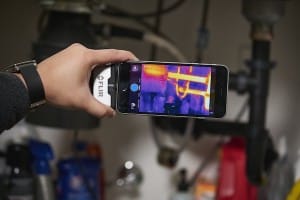
Rugged monitors are essential tools for industries that require durable and reliable display solutions in harsh environments. From military applications to industrial settings, these monitors are built to withstand extreme temperatures, vibrations, dust, and moisture. Manufacturing such robust devices involves a meticulous process, often with key components sourced from global suppliers, including those based in Read more
Rugged monitors are essential tools for industries that require durable and reliable display solutions in harsh environments. From military applications to industrial settings, these monitors are built to withstand extreme temperatures, vibrations, dust, and moisture. Manufacturing such robust devices involves a meticulous process, often with key components sourced from global suppliers, including those based in China. As a major hub for electronics manufacturing, China plays a crucial role in the production of rugged monitors, making it a common destination for companies seeking to optimize their supply chains. This article explores how rugged monitors are manufactured, the role of Chinese components in this process, and essential tips for business trips to China, including the importance of using a VPN.

How Rugged Monitors Are Manufactured
The production of rugged monitors is a complex process that involves several stages, from design and material selection to assembly and rigorous testing. Each step is carefully executed to ensure that the final product meets the stringent requirements necessary for operation in challenging environments.
Key Stages in the Manufacturing Process
- Design and Prototyping: The process begins with the design phase, where engineers create detailed specifications for the rugged monitor. This includes selecting materials that can withstand extreme conditions, such as reinforced glass for screens and durable metal or plastic for enclosures. Prototypes are then developed to test the design’s feasibility and performance.
- Component Sourcing: Once the design is finalized, the next step is sourcing the necessary components. This includes high-quality displays, protective casings, circuit boards, and input/output interfaces. Many of these components are sourced from specialized suppliers, with a significant number coming from China, known for its advanced electronics manufacturing capabilities.
- Assembly: During the assembly phase, the sourced components are brought together to create the rugged monitor. This involves precision engineering to ensure that each part fits together perfectly, providing the necessary protection against external elements. Automated machinery and skilled technicians work together to assemble the monitors to the exact specifications required.
- Testing and Quality Control: Rugged monitors undergo rigorous testing to ensure they can perform under the harshest conditions. This includes environmental testing for temperature extremes, shock and vibration testing, and water and dust resistance tests. Only monitors that pass these stringent tests are approved for sale.
- Final Inspection and Packaging: The last step in the manufacturing process is a final inspection to ensure that the product meets all quality standards. Once inspected, the monitors are securely packaged to protect them during transportation and are then shipped to customers worldwide.
Statista reports that the global market for rugged electronics, including monitors, is expected to reach $12 billion by 2026, driven by increasing demand from sectors such as defense, industrial automation, and outdoor digital signage.
The Role of Chinese Components in Manufacturing
China is a global leader in electronics manufacturing, providing a wide range of components that are essential for the production of rugged monitors. From display panels to circuit boards, Chinese manufacturers offer high-quality parts at competitive prices, making them a go-to source for companies around the world.
Benefits of Sourcing Components from China
- Cost Efficiency: One of the primary reasons companies source components from China is the cost advantage. Chinese manufacturers can produce high-quality parts at a lower cost due to economies of scale, lower labor costs, and established supply chains.
- Advanced Manufacturing Capabilities: China is home to some of the world’s most advanced electronics manufacturing facilities. These factories are equipped with cutting-edge technology and skilled labor, ensuring that components meet the rigorous standards required for rugged monitors.
- Speed and Flexibility: Chinese suppliers are known for their ability to quickly scale production to meet demand. This flexibility is crucial for companies that need to respond to changing market conditions or customer requirements.
- Diverse Supplier Base: The vast network of suppliers in China allows companies to source a wide range of components from a single location. This not only simplifies logistics but also ensures consistency in quality and supply.
Advantages of Sourcing Components from China
| Benefit | Description | Impact on Manufacturing Process |
| Cost Efficiency | Lower production costs due to economies of scale | Reduces overall manufacturing expenses |
| Advanced Capabilities | Access to cutting-edge manufacturing technology | Ensures high-quality components |
| Speed and Flexibility | Ability to scale production quickly | Meets changing demand and production schedules |
| Diverse Supplier Base | Wide range of components available | Simplifies supply chain management |
Forbes notes that over 70% of global electronics components are sourced from China, underscoring the country’s critical role in the electronics manufacturing industry.
Navigating Language Barriers and Communication Challenges
Another critical aspect of conducting business in China is navigating potential language barriers and communication challenges. While many business professionals in China speak English, especially in major cities and manufacturing hubs, there can still be misunderstandings due to differences in language, culture, and business etiquette. To mitigate these challenges, it’s advisable to hire a local translator or interpreter who is familiar with industry-specific terminology and business practices. Additionally, preparing key documents in both English and Mandarin can help ensure clarity during negotiations and factory visits. Effective communication is essential for building trust and ensuring that your specifications and quality standards are clearly understood and met by your Chinese partners.
What You Need to Know for a Business Trip to China
For businesses involved in the manufacturing or sourcing of rugged monitor components, traveling to China is often a necessary step. Visiting suppliers, inspecting factories, and negotiating deals require on-the-ground presence. However, a successful business trip to China requires careful preparation, including understanding local business practices and ensuring secure communication.
Essential Tips for Your Trip
- Understanding Local Culture and Business Practices: Chinese business culture emphasizes relationships, known as “guanxi.” Building strong personal relationships with suppliers and partners is crucial for successful negotiations and long-term collaboration. Be prepared to engage in social activities and exchange gifts as part of this relationship-building process.
- Factory Visits and Quality Control: When visiting factories, it’s important to conduct thorough inspections to ensure that the components meet your quality standards. This includes checking the production process, reviewing quality control procedures, and verifying certifications.
- Securing Your Communications with a VPN: When traveling to China, it’s essential to use a Virtual Private Network (VPN) to secure your internet connections. China’s internet is heavily regulated, with many foreign websites and services blocked. A VPN allows you to access essential communication tools and protect your data from potential cyber threats.
- Travel Logistics: Plan your travel itinerary carefully, including booking accommodations close to your supplier’s location and arranging reliable transportation. Additionally, consider the time difference and plan meetings accordingly to ensure productive interactions.
The Global Business Travel Association (GBTA) reports that China is the second-largest business travel market in the world, with business travelers spending over $300 billion annually. This highlights the importance of understanding the nuances of doing business in China.
Conclusion
The manufacturing of rugged monitors is a complex process that relies on high-quality components, many of which are sourced from China. The country’s advanced manufacturing capabilities ad cost efficiency make it an attractive option for companies looking to optimize their supply chains. However, conducting business in China requires careful planning and an understanding of local practices. By following the essential tips for a successful business trip, including the use of a VPN to secure communications, companies can effectively navigate the challenges of sourcing in China and ensure the production of top-tier rugged monitors that meet global standards.
